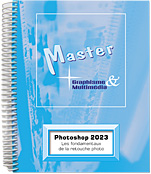- Supports de cours
- Excel 2019 and Office 365 versions - (E/E) : Text in English with the English version of the software
Excel 2019 and Office 365 versions (E/E) : Text in English with the English version of the software
This practical guide provides detailed information about the various functions available in Microsoft's® famous spreadsheet application Excel; it has been written for the 2019 version of Excel, including the features and differences to be found in the version included in Office 365. It is aimed at anyone who wants to explore and familiarise themselves with all its features. You will be introduced to the work environment, how to manage workbooks, templates and spreadsheets, and discover the...
- Niveau Initié à Confirmé
- Nombre de pages 390 pages
- Parution janvier 2020
- Niveau Initié à Confirmé
- Parution janvier 2020
This practical guide provides detailed information about the various functions available in Microsoft's® famous spreadsheet application Excel; it has been written for the 2019 version of Excel, including the features and differences to be found in the version included in Office 365. It is aimed at anyone who wants to explore and familiarise themselves with all its features.
You will be introduced to the work environment, how to manage workbooks, templates and spreadsheets, and discover the techniques you can use to enter and edit data (numbers, dates, data series, flash fill, equations etc.).
You will go on to see how you can carry out all kinds of calculations, from the simplest (percentage, statistics) to the more complex (conditional formula, date calculation, lookup functions, loan repayment table calculation, double input data table, data consolidation, array formulas etc.). There is a special section to deal with analytical tools: creating scenarios, calculating a target value, auditing your worksheets and using the Solver.
Next, you will use the many functions provided to format your tables (fonts, shading, borders, conditional formatting, styles etc.). You will learn to sort and filter your data, organise your tables as outlines and print them.
Excel is a powerful tool for presenting data as charts; you will discover the many different types of chart available: bar charts, histograms, pie charts, 2D and 3D map charts, trendlines and sparklines. You will also find out how to insert graphic objects (shapes, pictures, icons, 3D models, diagrams etc.) into a spreadsheet.
But Excel is also a very powerful data analysis tool: you can create and manage data tables, and create pivot tables which can easily be filtered and/or sorted.
Part of this book is devoted to group work, and so there is a wealth of information about how to protect workbooks and share data, and co-authoring. The last few chapters look at techniques you can use to optimise data entry (creating custom lists and drop-down lists), how to import data, macros, saving a workbook as a Web page and managing your User account.
You will be introduced to the work environment, how to manage workbooks, templates and spreadsheets, and discover the techniques you can use to enter and edit data (numbers, dates, data series, flash fill, equations etc.).
You will go on to see how you can carry out all kinds of calculations, from the simplest (percentage, statistics) to the more complex (conditional formula, date calculation, lookup functions, loan repayment table calculation, double input data table, data consolidation, array formulas etc.). There is a special section to deal with analytical tools: creating scenarios, calculating a target value, auditing your worksheets and using the Solver.
Next, you will use the many functions provided to format your tables (fonts, shading, borders, conditional formatting, styles etc.). You will learn to sort and filter your data, organise your tables as outlines and print them.
Excel is a powerful tool for presenting data as charts; you will discover the many different types of chart available: bar charts, histograms, pie charts, 2D and 3D map charts, trendlines and sparklines. You will also find out how to insert graphic objects (shapes, pictures, icons, 3D models, diagrams etc.) into a spreadsheet.
But Excel is also a very powerful data analysis tool: you can create and manage data tables, and create pivot tables which can easily be filtered and/or sorted.
Part of this book is devoted to group work, and so there is a wealth of information about how to protect workbooks and share data, and co-authoring. The last few chapters look at techniques you can use to optimise data entry (creating custom lists and drop-down lists), how to import data, macros, saving a workbook as a Web page and managing your User account.
 Editions ENI Livres | Vidéos | e-Formations
Editions ENI Livres | Vidéos | e-Formations











































































































































